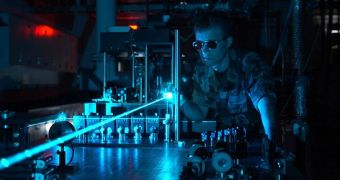For three years now, laser liposuction has been practiced in the United States with the approval of the Food and Drug Administration (FDA). The reason why most people request the procedure is that it eliminates some of the major drawbacks of conventional liposuction.
For starters, the established way of removing excess fat calls for patients to be placed under general anesthetic. The recovery process is long and painful, and not many women – the main beneficiaries of cosmetic surgery – are willing to go through this.
When no other option was available, they subjected themselves to the pain, but now that laser liposuction is a reality, many flock to clinics where the procedure is available.
There are two main ways surgeons may go about performing this operation. The first one is treating the targeted area with a local anesthetic, and then performing the procedure.
The local anesthetic contains lidocaine, epinephrine, and saline, and it is used for lunchtime procedures, so called because they don't take a long time to complete. Doctors aim the lasers at the patient's “trouble area” and then activate it to melt the fat.
The liquid is not removed, and so patients who opt for this type of procedure generally need to have it repeated after about five weeks.
A second type of laser liposuction uses both the laser and the suction devices typical in conventional procedures. Patients still have to go under general anesthesia, but only because doctors use a specialized needle called a cannula to remove the liquefied fat after zapping it with lasers.
But some experts argue that performing this procedure rather than the conventional one does not save anyone any recovery time. Additionally, using lasers to remove fat is not as effective as using a suction devices alone, critics add.
The medical director of the Chicago-based Liposuction Institute of Lift Laser and Body, Mir Jafer Joffrey, says that the laser version is only better when it comes to tightening the skin. These effects however last for only three months.
“It is not really a magic wand in any sort of way, it is a great skin tightening technique is what it comes down to,” Joffrey explains.
“If you look at advertisements for Smartlipo, Prolipo, whatever all these laser liposuctions they make it seem like you have less down time,” he adds, noting that these claims are simply not true.
Recovery times are similar, as are the risks, both proponents and critics of liposuction agree. So, ultimately, it's up to the patients themselves to inform themselves about which type of procedure they would like to get, experts at the Northwestern University say.

 14 DAY TRIAL //
14 DAY TRIAL //